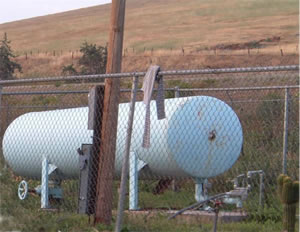Latino communities have higher nitrate levels in drinking water
San Joaquin Valley communities with large Latino populations are exposed to disproportionately high levels of the agricultural chemical nitrate through their drinking water, a team of researchers at the University of California, Berkeley found in a study published in the June issue of Environmental Health Perspectives.
The study explored whether there were demographics-related inequalities in nitrate exposure of residents in 327 drinking water systems throughout the San Joaquin Valley’s eight counties, from 1999 to 2001. This is the first peer-reviewed study in the United States to directly analyze the relationship between nitrate contamination, race and class.
Nitrate is a chemical used as fertilizer by farmers, and also derives from animal manure, human septic systems and the atmosphere. When ingested via drinking water it can cause reproductive harm to women, cause the often fatal “blue baby syndrome,” and may be associated with thyroid cancer, among other health effects, according to the U.S. EPA and numerous epidemiological studies.

Researchers found that across all eight counties studied, there was a positive correlation between water systems that served larger proportions of Latinos and increased nitrate levels in the water systems, and that Latinos in the San Joaquin Valley are disproportionately exposed to higher levels of nitrates in drinking water. In addition, researchers found that this relationship is strongest in smaller water systems.
“This means that some of the most economically and socially vulnerable residents in the Valley face some of the worst drinking water threats,” said Carolina Balazs, a doctoral candidate in the Energy and Resources Group and lead author on the study.
Balazs said that in working with Valley-based community groups and leaders, her research team heard that smaller, low-income and Latino communities were disproportionately impacted in Tulare County.
“Spurred by this anecdotal evidence and the work of community-based groups, we wanted to consider this problem from a systematic, Valley-wide perspective,” she said.
She said researchers have known for quite some time that small water systems have some of the biggest water quality problems across the nation.
“Our research highlights that size is not the only issue. While an array of communities with varying demographics are impacted by nitrate contamination, our findings highlight that inequalities in exposure exist—low-income Latino residents are likely affected the most,” Balazs said.
After decades of intensive agriculture in the Valley, the San Joaquin Valley has one of the most contaminated aquifers in the nation, according to the United States Geological Service. Nitrogen from fertilizer use and manure represent the two leading sources of nitrate contamination of the San Joaquin’s groundwater aquifers, the key source of drinking water for residents in the Valley, the USGS and other hydrologic studies note. Because nearly 95 percent of the Valley’s population relies on groundwater for drinking, groundwater contamination is a public health concern. Balazs said that these risks are compounded by the high costs of mitigation for nitrate, which results in few systems actually treating for it.
The San Joaquin Valley has some of the highest rates of poverty and largest Latino populations in California. These communities often cannot afford to mitigate nitrate contamination or address related health consequences, Balazs said.
The study also found that approximately 15 percent of residents in the study sample were served by water systems that had nitrate levels beyond the halfway mark of federally safe levels.
“This indicates that there is a need for monitoring and precautionary mitigation for communities whose nitrate levels are below legally acceptable limits but approaching unsafe levels, as nitrate contamination will likely increase and thus affect increasing numbers of communities in years to come” said Balazs. She said continued widespread use of nitrogen-based fertilizers and the increasing demand for groundwater in the Valley further highlights the need for further study and for mitigation.
The study was an interdisciplinary collaboration between Balazs; Rachel Morello-Frosch, a professor with the Department of the Environmental Science, Policy and Management and the School of Public Health; Alan Hubbard, a professor with the School of Public Health; and Isha Ray, a professor with the Energy and Resources Group—all of UC Berkeley.
For more information:
